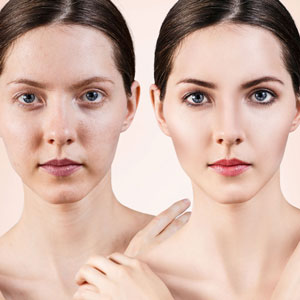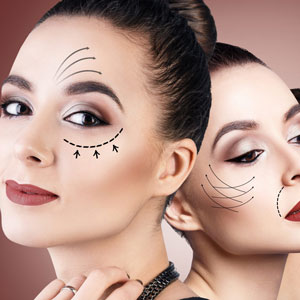Excellence In Non-Surgical Aesthetic Cosmetic Medicine
Excellence in Non-Surgical Aesthetic Cosmetic Medicine
ACNE & SCARS
LASER SKIN TREATMENT
FAST FACTS:
Fotona Dynamis Laser treatments effectively destroys acne causing bacteria | Fraxel Restore & Fraxel Repair CO2 lasers permanently repair scar damaged skin – Revolutionary Acne & Scar treatments by MD Cosmedical Solutions.
The medical team at MD Cosmedical Solutions Cosmetic Clinics – Acne & Acne Scar Treatment Experts – having successfully performed up to 30,000 Fraxel & Fotona Laser treatments since 2006.
MD Cosmedical Solutions Cosmetic Clinics utilise the revolutionary advanced and patented Fotona Ablative, Fraxel Restore and Fraxel CO2 Lasers – one of the most effective acne treatments and skin repair technologies with TGA, FDA, & CE Certification and Approval.
Non-Surgical Acne & Scars Lunch-Time 30-60 minute treatments with minimal downtime, results begin immediately and continue to improve with treatments and time – effectively and permanently renewing acne damaged skin.
Fraxel & Fotona Laser treatments may be combined with other treatments for synergistic and best skin rejuvenation results e.g. Thermage Skin Tightening, Aptos Thread Lifts and Wrinkle Treatments.
Fraxel & Fotona Laser treatments pricing is determined by areas treated, and the number of areas to be treated – competitive prices and Zip Pay is available.
Consultations are performed by Dr Buddy Beaini and medical consultants – MD Cosmedical Solutions are reputable cosmetic clinics in operation since 2001. All cosmetic medical procedures may have small risks or variable results, and some patients may not be suitable for certain procedures. However there are no risks of traditional surgery or general anaesthesia as these procedures are non-surgical.
MD Cosmedical Solutions Clinics are conveniently Located in Sydney CBD (Sheraton Hotel), Wahroonga (OFF M2) and Canberra (Barton) – Undercover Parking, Close to Stations & Bus Stops.
Scars are indentations in the skin that occur after a medical condition such as acne or after a surgical incision. Especially when they’re on the face or other visible areas, scars can carry the stigma of adolescent acne long after the acne is gone, or they can serve as unpleasant reminders of a past surgery.
ACNE LESIONS
About Acne
Acne is a common skin disorder, characterised by areas of skin with seborrhea (scaly red skin), comedondes, (blackheads and whiteheads), papules (pinheads), pustules (pimples), nodules (large papules) and possibly scarring. Acne affects mostly skin with the densest population of sebaceous follicles – these areas include the face, the upper part of the chest, and the back.
Acne occurs most commonly during adolescence, and often continues into adulthood. In adolescence, acne is usually caused by an increase in testosterone, which accrues during puberty, regardless of sex. For most people, acne diminishes over time and tends to disappear, or at the very least decreases, by the age of 25 years. But this is unpredictable and may continue to the thirties or forties. Acne may also be triggered off later in life with stress, medications and hormonal changes (e.g. pregnancy, contraception and HRT).
Aside from scarring, the main effects of acne breakouts are psychological, such as reduced self-esteem and sometimes depression.
Acne Treatments
Active acne may be treated in several ways, or with several modalities depending on the severity and resilience of the acne condition.
Most acne suffering patients would have been consulted by a medical practitioner and have had some medical treatments including dietry changes, cosmaceuticals, antibiotics, roaccutane, OCP (female patients).
Patients with resilient active acne often present to MD Cosmedical Solutions. Dr Beaini’s protocol for treating active acne includes some of the following stages, depending on the severity and longevity of the condition:
- Pathology (blood tests to check hormone levels & fluctuations))
- Pelvic ultrasound (in females to exclude medical conditions such as ovarian cysts, endometriosis, polycystic ovaries etc)
- Fotona Nd-Yag Laser
- Fraxel Restore Laser
- Fraxel CO2 Laser
- Microdermabrasion
Acne laser skin treatments have a very positive outcome in the treatment of patients that have active acne and concurrent acne scars. The advanced Fotona SP Dynamis Nd-Yag laser helps to directly destroy acne causing bacteria (i.e. Cutibacterium Acnes), and unblock skin pores so that bacteria are exposed and destroyed by oxygenation. Fraxel Restore & Fraxel CO2 laser treatments help to repair acne scar damaged skin with remarkable results.
ACNE SCARS
About Acne Scars
Acne scarring or “pimple scarring” is the result of inflammation within the dermis brought on by acne. The wound trying to heal itself resulting in too much collagen in one area creates the acne scar.
The most common physical acne scars are often referred to as “icepick” scars. This is because the scars tend to cause an indentation in the skin’s surface.
- Icepick scars – deep pits, which are the most common and a classic sign of acne scarring.
- Box car scars – angular scars that usually occur on the temple and cheeks, and can be either superficial or deep, these are similar to chickenpox
- Rolling scars – scars that give the skin a wave-like appearance.
- Hypertrophic scars – thickened or keloid type of scars.
- Acne Pigmentation
Pigmented acne scars are usually the result of nodular or cystic acne (the painful ‘bumps’ lying under the skin). They often leave behind inflamed red marks. Often, the pigmentation scars can be avoided simply by avoiding aggravation of the nodule or cyst. Pigmentation scars nearly always fade with time taking between three months to two years to do so, although can last indefinitely if untreated.
Acne Scar Treatments
MD Cosmedical Solutions offer expert acne scar treatments, utilising the revolutionary Fraxel Restore Dual & Fraxel Repair CO2 Lasers to maximise acne scar removal results. Acne Scar Removal is an extremely popular and patient satisfying treatment, changing the lives of acne scar sufferers.
SURGICAL, INJURY AND SELF HARM SCARS
About Surgical, Injury and Self Harm Scars
Generally surgery, cuts, acne, skin infection, chickenpox, burns and scratches can cause scars. How major the scar becomes depends on the age and health of the person, genetic predisposition, location of skin damage, cause of skin damage, treatment of the wound and movement during healing. In particular, if surgical scars are not properly closed, or if they become infected, they are much more likely to result in a larger & more unsightly scar. Scars will either settle within 12 months or remain permanent. The different types of surgical scars include hypertrophic, keloid, and uncommonly, contracture scars:
Keloid scars
- raised, itchy, often red and can be bigger than the original injury to the skin
- appear because excess collagen forms as part of the healing process
- rarely subside with time
- particularly occur in Asian and African people
Hypertrophic scars
- similar to keloid scars but do not cover an area bigger than the original injury and may subside with time
Contracture scars
- contracture scars may result from surgery or a burn. The skin becomes tight and can affect mobility.
Surgical, Injury & Self Harm Scars Treatments
Surgical & injury scars treatments with Fraxel Lasers helps reduce unsightly scars. MD Cosmedical Solutions are professional Fraxel Laser clinics and offer expert scar treatments, utilising the revolutionary Fraxel Restore Dual & Fraxel Repair CO2 Lasers to maximise scar removal results.
STRETCH MARKS
About Stretch Marks
Stretch Marks are a form of skin scarring with an off-colour hue. Tearing of the dermis, which over time may diminish, but will not disappear completely, causes them. Although they are harmless, these “scars” are unsightly and are a common concern to those that are unfortunate to acquire them. Fraxel Laser offers an excellent and rewarding treatment of stretch marks.
Stretch marks are usually the result of the rapid stretching of the skin associated with rapid growth or rapid weight changes. They may also be influenced by hormonal changes associated with puberty, pregnancy, bodybuilding, hormone replacement therapy etc. Stretch marks formed during pregnancy, usually during the last trimester. Pregnancy stretch marks are usually on the belly, but also commonly occurring on the breasts, thighs, hips, lower back and buttocks, and are known as striae gravid arum.
A number of causes promote the appearance of stretch marks: low maternal age, high body mass index, and weight gain over 15 kg and higher neonatal birth weight. Teenagers are at highest risk of developing severe striae.
Skin subjected to more stretching force than it can handle will tear. Hormonal changes and genetics influence the skin’s capacity to withstand stretching forces, as so does excessive dieting.
Stretch Marks Treatments
Scars of any cause, including stretch marks, may be treated with Fraxel Restore & Fraxel Repair CO2 Laser. Life changing stretch mark treatments are very popular and successful with the revolutionary Fraxel Lasers. Scars that are treated in their earlier stages have the best outcomes. MD Cosmedical Solutions have vast experience in the treatment all varieties of scars.
Consultations are performed by Dr Buddy Beaini and medical consultants – MD Cosmedical Solutions are reputable cosmetic clinics in operation since 2001. All cosmetic medical procedures may have small risks or variable results, and some patients may not be suitable for certain procedures. However there are no risks of traditional surgery or general anaesthesia as these procedures are non-surgical.
Acne laser skin treatments have a very positive outcome in the treatment of patients that have active acne and concurrent acne scars. The advanced Fotona SP Dynamis Nd-Yag laser helps to directly destroy acne causing bacteria (i.e. Cutibacterium Acnes), and unblock skin pores so that bacteria are exposed and destroyed by oxygenation. Fraxel Restore & Fraxel CO2 laser treatments help to repair acne scar damaged skin with remarkable results.
Whether you have mild to moderate skin damage, the most severe skin damage, or you just want prevention and maintenance, Fraxel Restore Laser treatment is what you have been waiting for.
Fraxel Restore & Repair CO2 Laser technologies treat the following conditions:
- Acne & Acne Scars
- Surgical, Trauma & Self Harm Scars
- Burn Scars
- Stretch Marks
- Ageing Skin
- Sun Damaged Skin
- Pigmentation, Melasma & Age Spots
- Actinic Keratosis
- Wrinkles & Fine Lines
- Skin Pores
Clinical studies suggest that on average, an effective treatment regimen is normally 5 laser treatment sessions spaced approximately 4 weeks apart. Depending on your condition and schedule, you and the doctor may choose to space treatment sessions further apart. Results are immediate and progressive, with optimal improvement usually visible in 2 to 3 months. This time frame and treatment structure allow for complete healing and the production of new collagen and elastin to replace damaged tissue.
The Fraxel Restore Dual Laser treatment delivers remarkable results with minimal downtime. That means you can rejuvenate your skin on your lunch hour and quickly return to your normal activities.
In an initial consultation, your physician will determine the best Fraxel Restore laser treatment plan for your desired results. Then, when you’re ready for treatment, it will be performed in your physician’s clinic. Here’s what happens:
- The area of your skin to be treated is thoroughly cleansed
- A special topical anaesthetic cream is applied for about 30 – 60 minutes
- The treatment takes just 20 to 30 minutes for a full face treatment
Most patients describe an increased sensation of heat during the treatment. To minimise discomfort, a special prescription topical anaesthesia is applied before the procedure and cold air is used on the treatment area during the procedure. After the treatment, most patients feel like they have a sunburn, which usually diminishes within the first 24 hours.
After the procedure, depending on the aggressiveness of your Fraxel Laser treatment, you will have some degree of redness, swelling or a sunburn sensation, which are signs that your body’s natural healing process is building new skin from the inside out. You can return to routine activities in as little as one hour or, for more aggressive treatments, after one day. A specialised skin care regimen will be prescribed by you MD Cosmedical Solutions doctor to protect, soothe, and further accentuate your Fraxel Laser treatment results.
During the first 24 hours after treatment, your skin may feel as though it is sunburned, and it will appear pink or reddish. You can wear make-up to reduce the sunburned appearance. Your skin may naturally bronze over the next week or two. As with sunburn, your skin will flake and exfoliate normally. Use a moisturizer to reduce the appearance of dry flakes.
Dramatic results are usually seen after the first treatment with the Fraxel Dual laser. Typically the skin will look fresher and clearer, with noticeable improvement in skin texture and tone. These effects are evident after the first week, once the darkened pigmentation lifts from the skin surface. The skin texture continues to improve over successive weeks to months, as the structural changes in the skin improve with the body’s natural healing processes. Even greater improvements are achieved as the treatment programme is completed.
Results of Fraxel Restore Laser can last for many years depending on your particular condition and how you take care for your skin. Once your skin is treated, continue to protect it as described by your medical practitioner.
Swelling and redness are the most common side effects from Fraxel Restore treatment. Any swelling is typically minimal and subsides within a day or two, and any redness typically fades within a few days. Makeup is used in most instances so that patients may return to work the next day after treatment. Other temporary side effects may include minor itching, dry skin, peeling or flaking, and a bronzed skin appearance. There is a very limited risk of infection or scarring. The intensity and duration of side effects depend on the aggressiveness of treatment and on your particular healing characteristics. Your physician will provide specific instructions about what to expect and how to minimize any side effects
Fraxel Restore Dual Laser Aftercare:
The aftercare for Fraxel Laser treatments is simple but important:
- Simple analgesia (e.g. Paracetamol or Nurofen) for the first
24 hours if required
- Ice application to the treated area for the 1st 24 to 48 hours
- Avoid excessive heat & harsh skin products for the 1st week
- The skin should be moisturised four times daily and the skin cleansed twice daily
- Make-up and sunscreen may be applied at any time immediately following treatment
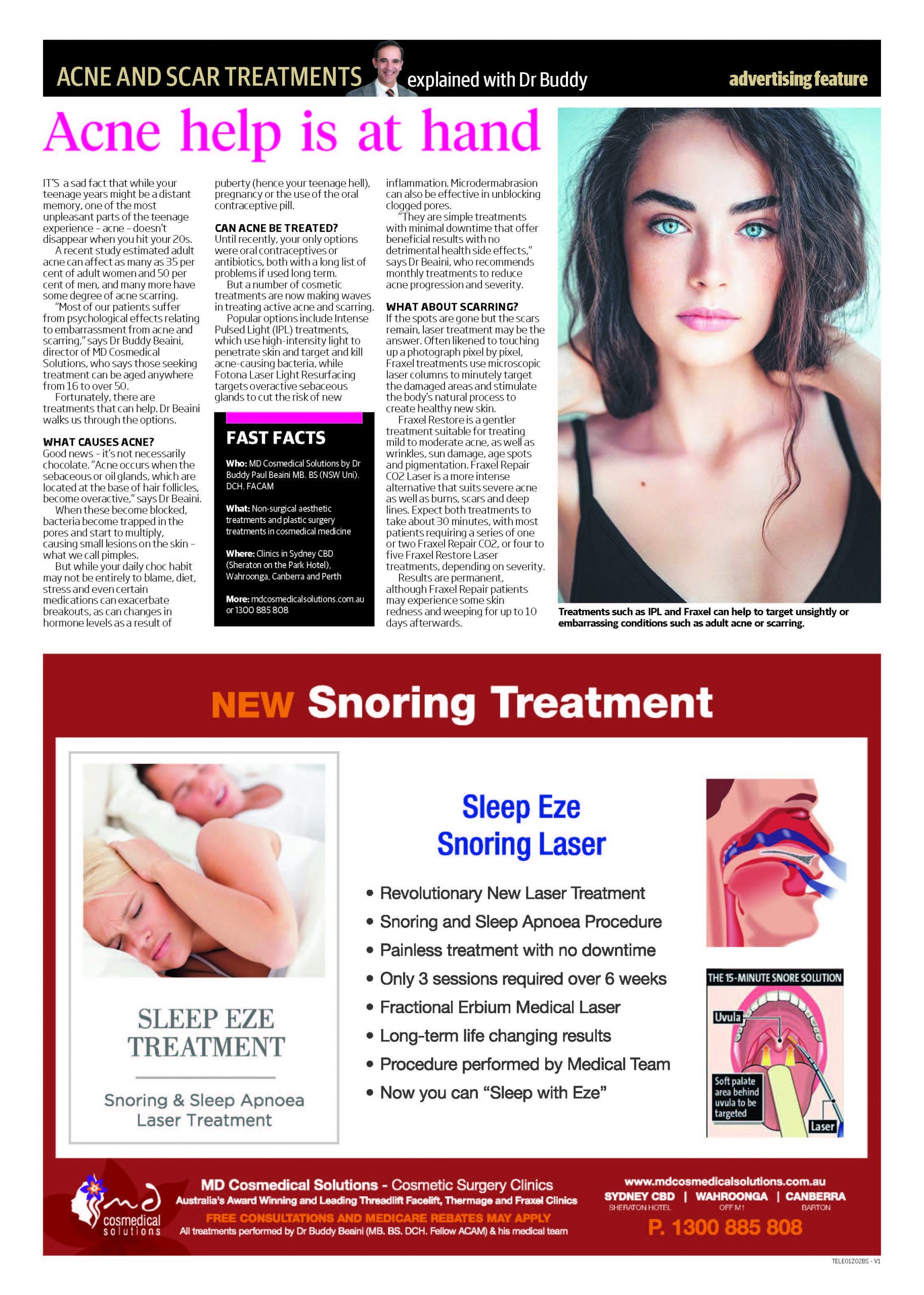
DETAILED INFORMATION
Scars are indentations in the skin that occur after a medical condition such as acne or after a surgical incision. Especially when they’re on the face or other visible areas, scars can carry the stigma of adolescent acne long after the acne is gone, or they can serve as unpleasant reminders of a past surgery.
ACNE LESIONS
About Acne
Acne is a common skin disorder, characterised by areas of skin with seborrhea (scaly red skin), comedondes, (blackheads and whiteheads), papules (pinheads), pustules (pimples), nodules (large papules) and possibly scarring. Acne affects mostly skin with the densest population of sebaceous follicles – these areas include the face, the upper part of the chest, and the back.
Acne occurs most commonly during adolescence, and often continues into adulthood. In adolescence, acne is usually caused by an increase in testosterone, which accrues during puberty, regardless of sex. For most people, acne diminishes over time and tends to disappear, or at the very least decreases, by the age of 25 years. But this is unpredictable and may continue to the thirties or forties. Acne may also be triggered off later in life with stress, medications and hormonal changes (e.g. pregnancy, contraception and HRT).
Aside from scarring, the main effects of acne breakouts are psychological, such as reduced self-esteem and sometimes depression.
Acne Treatments
Active acne may be treated in several ways, or with several modalities depending on the severity and resilience of the acne condition.
Most acne suffering patients would have been consulted by a medical practitioner and have had some medical treatments including dietry changes, cosmaceuticals, antibiotics, roaccutane, OCP (female patients).
Patients with resilient active acne often present to MD Cosmedical Solutions. Dr Beaini’s protocol for treating active acne includes some of the following stages depending on the severity and longevity of the condition:
- Pathology (blood tests to check hormone levels & fluctuations))
- Pelvic ultrasound (in females to exclude medical conditions such as ovarian cysts, endometriosis, polycystic ovaries etc)
- Fotona Nd-Yag Laser
- Fraxel Restore Laser
- Fraxel CO2 Laser
- Microdermabrasion
Acne laser skin treatments have a very positive outcome in the treatment of patients that have active acne and concurrent acne scars. The advanced Fotona SP Dynamis Nd-Yag laser helps to directly destroy acne causing bacteria (i.e. Cutibacterium Acnes), and unblock skin pores so that bacteria are exposed and destroyed by oxygenation. Fraxel Restore & Fraxel CO2 laser treatments help to repair acne scar damaged skin with remarkable results.
ACNE SCARS
About Acne Scars
Acne scarring or “pimple scarring” is the result of inflammation within the dermis brought on by acne. The wound trying to heal itself resulting in too much collagen in one area creates the acne scar.
The most common physical acne scars are often referred to as “icepick” scars. This is because the scars tend to cause an indentation in the skin’s surface.
- Icepick scars – deep pits, which are the most common and a classic sign of acne scarring.
- Box car scars – angular scars that usually occur on the temple and cheeks, and can be either superficial or deep, these are similar to chickenpox
- Rolling scars – scars that give the skin a wave-like appearance.
- Hypertrophic scars – thickened or keloid type of scars.
- Acne Pigmentation
Pigmented acne scars are usually the result of nodular or cystic acne (the painful ‘bumps’ lying under the skin). They often leave behind inflamed red marks. Often, the pigmentation scars can be avoided simply by avoiding aggravation of the nodule or cyst. Pigmentation scars nearly always fade with time taking between three months to two years to do so, although can last indefinitely if untreated.
Acne Scar Treatments
MD Cosmedical Solutions offer expert acne scar treatments, utilising the revolutionary Fraxel Restore Dual & Fraxel Repair CO2 Lasers to maximise acne scar removal results. Acne Scar Removal is an extremely popular and patient satisfying treatment, changing the lives of acne scar sufferers.
SURGICAL, INJURY & SELF HARM SCARS
About Surgical, Injury & Self Harm Scars
Generally surgery, cuts, acne, skin infection, chickenpox, burns and scratches can cause scars. How major the scar becomes depends on the age and health of the person, genetic predisposition, location of skin damage, cause of skin damage, treatment of the wound and movement during healing. In particular, if surgical scars are not properly closed, or if they become infected, they are much more likely to result in a larger & more unsightly scar. Scars will either settle within 12 months or remain permanent. The different types of surgical scars include hypertrophic, keloid, and uncommonly, contracture scars:
Keloid scars
- raised, itchy, often red and can be bigger than the original injury to the skin
- appear because excess collagen forms as part of the healing process
- rarely subside with time
- particularly occur in Asian and African people
Hypertrophic scars
- similar to keloid scars but do not cover an area bigger than the original injury and may subside with time
Contracture scars
- contracture scars may result from surgery or a burn. The skin becomes tight and can affect mobility.
Surgical, Injury & Self Harm Scars Treatments
Surgical & injury scars treatments with Fraxel Lasers helps reduce unsightly scars. MD Cosmedical Solutions are Australia’s leading Fraxel laser clinics and offer expert scar treatments, utilising the revolutionary Fraxel Restore Dual & Fraxel Repair CO2 Lasers to maximise scar removal results.
STRETCH MARKS
About Stretch Marks
Stretch Marks are a form of skin scarring with an off-colour hue. Tearing of the dermis, which over time may diminish, but will not disappear completely, causes them. Although they are harmless, these “scars” are unsightly and are a common concern to those that are unfortunate to acquire them. Fraxel Laser offers an excellent and rewarding treatment of stretch marks.
Stretch marks are usually the result of the rapid stretching of the skin associated with rapid growth or rapid weight changes. They may also be influenced by hormonal changes associated with puberty, pregnancy, bodybuilding, hormone replacement therapy etc. Stretch marks formed during pregnancy, usually during the last trimester. Pregnancy stretch marks are usually on the belly, but also commonly occurring on the breasts, thighs, hips, lower back and buttocks, and are known as striae gravid arum.
A number of causes promote the appearance of stretch marks: low maternal age, high body mass index, and weight gain over 15 kg and higher neonatal birth weight. Teenagers are at highest risk of developing severe striae.
Skin subjected to more stretching force than it can handle will tear. Hormonal changes and genetics influence the skin’s capacity to withstand stretching forces, as so does excessive dieting.
Stretch Marks Treatments
Scars of any cause, including stretch marks, may be treated with Fraxel Restore & Fraxel Repair CO2 Laser. Life changing stretch mark treatments are very popular and successful with the revolutionary new Fraxel Lasers. Scars that are treated in their earlier stages have the best outcomes. MD Cosmedical Solutions specialises in the treatment all varieties of scars.
Acne laser skin treatments have a very positive outcome in the treatment of patients that have active acne and concurrent acne scars. The advanced Fotona SP Dynamis Nd-Yag laser helps to directly destroy acne causing bacteria (i.e. Cutibacterium Acnes), and unblock skin pores so that bacteria are exposed and destroyed by oxygenation. Fraxel Restore & Fraxel CO2 laser treatments help to repair acne scar damaged skin with remarkable results.
Whether you have mild to moderate skin damage, the most severe skin damage, or you just want prevention and maintenance, Fraxel Restore Laser treatment is what you have been waiting for.
Fraxel Restore & Repair CO2 Laser technologies treat the following conditions:
- Acne & Acne Scars
- Surgical, Trauma & Self Harm Scars
- Burn Scars
- Stretch Marks
- Ageing Skin
- Sun Damaged Skin
- Pigmentation, Melasma & Age Spots
- Actinic Keratosis
- Wrinkles & Fine Lines
- Skin Pores
Clinical studies suggest that on average, an effective treatment regimen is normally 5 laser treatment sessions spaced approximately 4 weeks apart. Depending on your condition and schedule, you and the doctor may choose to space treatment sessions further apart. Results are immediate and progressive, with optimal improvement usually visible in 2 to 3 months. This time frame and treatment structure allow for complete healing and the production of new collagen and elastin to replace damaged tissue.
The Fraxel Restore Dual Laser treatment delivers remarkable results with minimal downtime. That means you can rejuvenate your skin on your lunch hour and quickly return to your normal activities.
In an initial consultation, your physician will determine the best Fraxel Restore laser treatment plan for your desired results. Then, when you’re ready for treatment, it will be performed in your physician’s clinic. Here’s what happens:
- The area of your skin to be treated is thoroughly cleansed
- A special topical anaesthetic cream is applied for about 30 – 60 minutes
- The treatment takes just 20 to 30 minutes for a full face treatment
Most patients describe an increased sensation of heat during the treatment. To minimise discomfort, a special prescription topical anaesthesia is applied before the procedure and cold air is used on the treatment area during the procedure. After the treatment, most patients feel like they have a sunburn, which usually diminishes within the first 24 hours.
After the procedure, depending on the aggressiveness of your Fraxel Laser treatment, you will have some degree of redness, swelling or a sunburn sensation, which are signs that your body’s natural healing process is building new skin from the inside out. You can return to routine activities in as little as one hour or, for more aggressive treatments, after one day. A specialised skin care regimen will be prescribed by you MD Cosmedical Solutions doctor to protect, soothe, and further accentuate your Fraxel Laser treatment results.
During the first 24 hours after treatment, your skin may feel as though it is sunburned, and it will appear pink or reddish. You can wear make-up to reduce the sunburned appearance. Your skin may naturally bronze over the next week or two. As with sunburn, your skin will flake and exfoliate normally. Use a moisturizer to reduce the appearance of dry flakes.
Dramatic results are usually seen after the first treatment with the Fraxel Dual laser. Typically the skin will look fresher and clearer, with noticeable improvement in skin texture and tone. These effects are evident after the first week, once the darkened pigmentation lifts from the skin surface. The skin texture continues to improve over successive weeks to months, as the structural changes in the skin improve with the body’s natural healing processes. Even greater improvements are achieved as the treatment programme is completed.
Results of Fraxel Restore Laser can last for many years depending on your particular condition and how you take care for your skin. Once your skin is treated, continue to protect it as described by your medical practitioner.
Swelling and redness are the most common side effects from Fraxel Restore treatment. Any swelling is typically minimal and subsides within a day or two, and any redness typically fades within a few days. Makeup is used in most instances so that patients may return to work the next day after treatment. Other temporary side effects may include minor itching, dry skin, peeling or flaking, and a bronzed skin appearance. There is a very limited risk of infection or scarring. The intensity and duration of side effects depend on the aggressiveness of treatment and on your particular healing characteristics. Your physician will provide specific instructions about what to expect and how to minimize any side effects
Fraxel Restore Dual Laser Aftercare:
The aftercare for Fraxel Laser treatments is simple but important:
- Simple analgesia (e.g. Paracetamol or Nurofen) for the first
24 hours if required
- Ice application to the treated area for the 1st 24 to 48 hours
- Avoid excessive heat & harsh skin products for the 1st week
- The skin should be moisturised four times daily and the skin cleansed twice daily
- Make-up and sunscreen may be applied at any time immediately following treatment
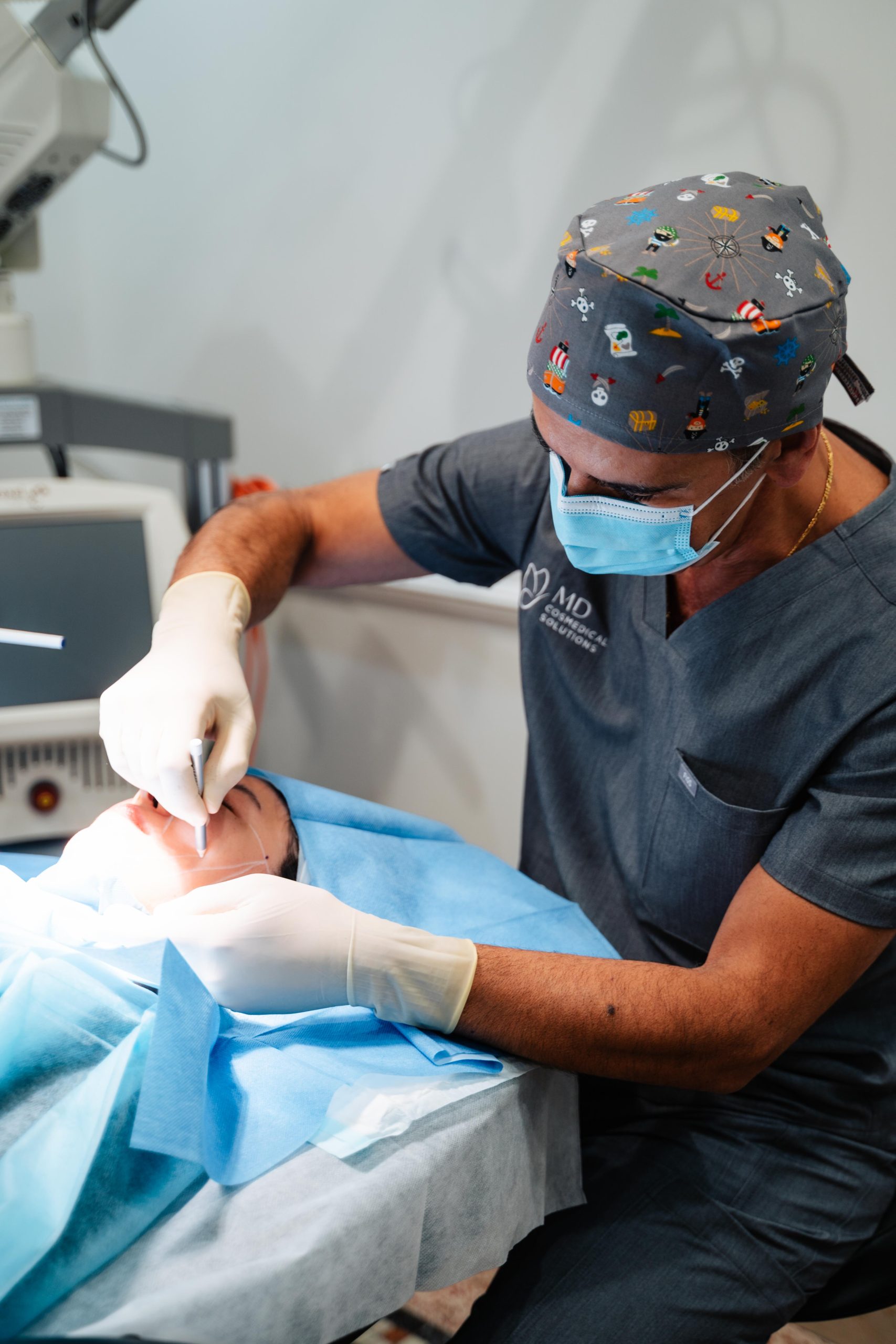


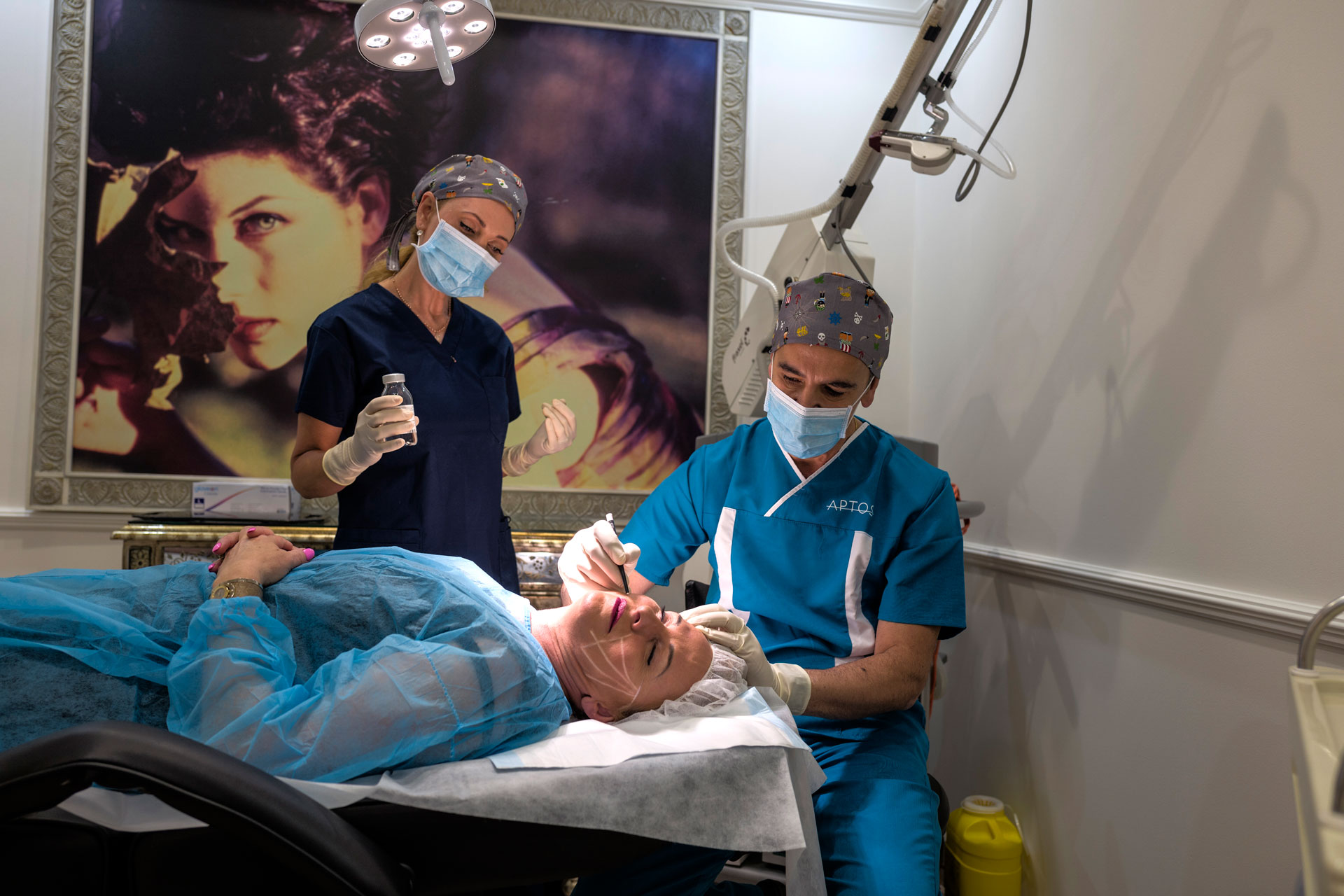







Professional Affiliations
Follow us on instagram
Enquire Now


